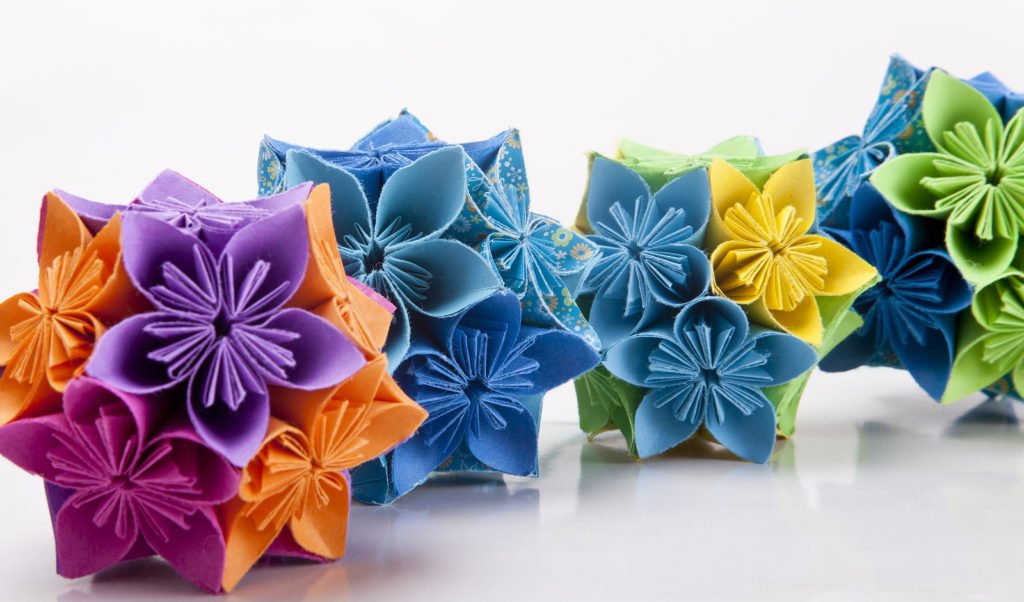Origami art is both beautiful and delicate, and every package must be carefully handled to preserve its beauty. Unlike many other products, origami demands precision in packing rather than fit. Whether you're sending a single crane or an intricate modular design, the journey from your hands to the recipient's doorstep must be flawless.
The fragility of these handmade items means that even the slightest bump can undo hours of careful work. As such, choosing the right shipping service goes beyond delivery times and costs—it's about ensuring your creation arrives as intended. From Japanese pattern origami paper sculptures to crepe origami flowers, this guide will help you navigate packaging, carriers, and costs so your art survives the trip in perfect condition. Read on!
Preparing Your Origami Art for Shipping
Origami art is generally intricate and fragile, which is why it needs special care. Start by wrapping each piece in acid-free paper and bubble wrap to prevent creasing. For more delicate items, like crepe origami flowers or bouquets of crepe origami, consider using foam core or acid-free foam to maintain their shape.
Place your wrapped origami model inside a sturdy cardboard box, ensuring there's no space. If there are gaps, you can use bubble wrap or crumpled paper to fill them and prevent movement. If shipping multiple pieces, combined shipping can save costs while keeping everything secure.
Choosing the Right Shipping Method
Selecting the best carrier for shipment depends on delivery times, destination, and fragility. For domestic shipping, ground shipping may suffice. For international delivery, check customs regulations and expected delivery dates to avoid delays.
During peak periods, such as holidays, opt for faster services to ensure your handmade items arrive on time. Some services offer day delivery or even same-day options for urgent shipments. Always request a delivery notification e-mail to track the delivery status and confirm the delivery address.
Managing Costs and Customer Expectations
Shipping delicate origami artwork often requires premium packaging and specialized carriers, which can significantly increase shipping costs compared to standard items. The fragile nature of folded paper creations may necessitate reinforced boxes, extra cushioning materials, and expedited shipping to minimize transit time—all factors that impact the final price. Be transparent with customers about these costs upfront by clearly listing shipping fees in your shopping cart or product descriptions to avoid checkout surprises.
To balance customer expectations, consider offering tiered shipping options—from budget-friendly ground delivery to premium expedited services—with clear explanations of how each affects protection and delivery times. If international buyers face unexpectedly high fees, provide combined shipping discounts for multiple items to offset expenses when possible.
For high-value commissions, you might partially absorb shipping costs as a goodwill gesture while emphasizing that these fees ensure their artwork arrives in pristine condition. Always clarify your policy for cancellations after shipment, as fragile origami shipments often can't be rerouted or returned without risk of damage.
Temperature and Humidity Risks
Origami paper is susceptible to moisture and extreme temperatures, which can cause warping, fading, or even mold during transit and storage. When shipping to humid climates or during seasonal shifts, consider using silica gel packets inside airtight packaging to absorb excess moisture. For temperature-controlled protection, insulated liners or thermal bubble wrap can help maintain stable conditions, especially for delicate pieces like dyed or metallic-folded artworks.
Customs Declarations for Paper Art
International shipments of origami can face unexpected delays if customs forms inaccurately describe the contents or undervalue the artwork. To avoid inspections that could damage delicate folds, packages should be accurately labeled as handmade paper art with precise materials, like Japanese washi paper. Including a printed invoice with harmonized tariff codes for artwork or crafts helps expedite clearance while ensuring proper duty assessments.
Insuring High-Value Origami Art
One-of-a-kind origami sculptures or commissioned pieces often carry significant artistic and monetary value, making insurance a wise investment. Work with carriers that offer specialized art shipping services, and always document the piece with detailed photos and appraisals before packaging. If damage occurs, having clear pre-shipment records ensures smoother claims processing with your credit card issuer or shipping insurance provider.
Preventing Theft or Loss in Transit
Use tamper-evident packaging like security tape or sealed plastic sleeves to deter theft of valuable origami pieces. Opt for tracked shipping services with signature confirmation, especially for high-value items, and avoid labels that might attract unwanted attention. Lastly, consider registered mail or certified carriers for irreplaceable works, as these services provide stricter chain-of-custody controls.
Conclusion
Shipping origami art requires thoughtful preparation, careful packaging, and strategic planning to protect these delicate creations. From selecting the right materials to choosing reliable carriers and shipping methods, each step plays a crucial role in preserving your artwork's integrity. By understanding the risks of temperature, humidity, and transit mishaps, you can take proactive measures to ensure your folded masterpieces arrive in pristine condition.

